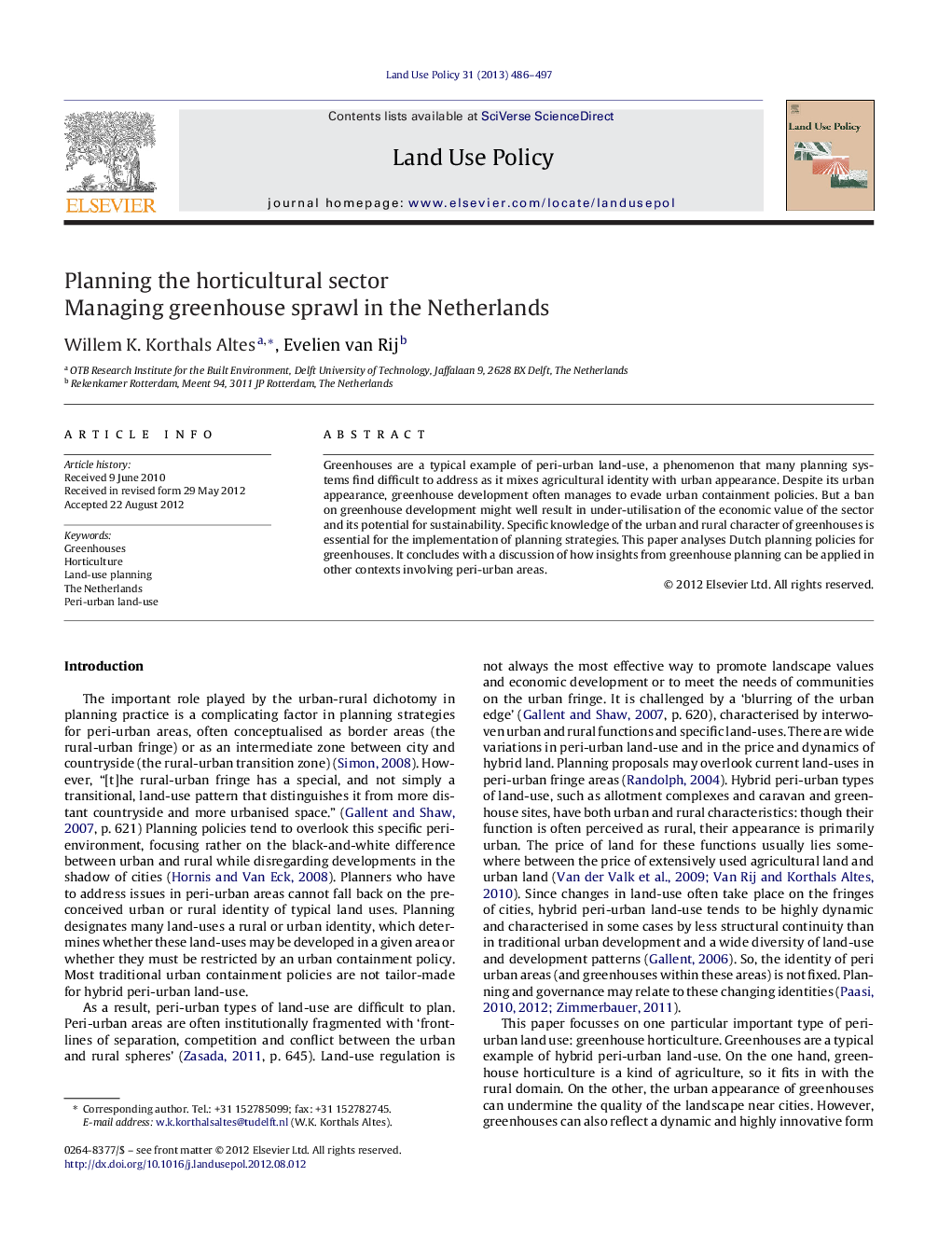| Article ID | Journal | Published Year | Pages | File Type |
|---|---|---|---|---|
| 93105 | Land Use Policy | 2013 | 12 Pages |
Greenhouses are a typical example of peri-urban land-use, a phenomenon that many planning systems find difficult to address as it mixes agricultural identity with urban appearance. Despite its urban appearance, greenhouse development often manages to evade urban containment policies. But a ban on greenhouse development might well result in under-utilisation of the economic value of the sector and its potential for sustainability. Specific knowledge of the urban and rural character of greenhouses is essential for the implementation of planning strategies. This paper analyses Dutch planning policies for greenhouses. It concludes with a discussion of how insights from greenhouse planning can be applied in other contexts involving peri-urban areas.
► Greenhouses are a typical example of peri-urban land-use, a phenomenon that many planning systems find difficult to address as it mixes agricultural identity with urban appearance. ► The planning of many hybrid peri-urban types of land-use, such as, greenhouses, balances between economic development, sustainability and landscape values. ► Grant systems and legal instruments to manage urban or rural tasks do not fit into the hybrid peri-urban planning agenda. ► The case of Midden-Delfland shows how the identity of an area can play an important role in the planning of peri-urban land-use.
